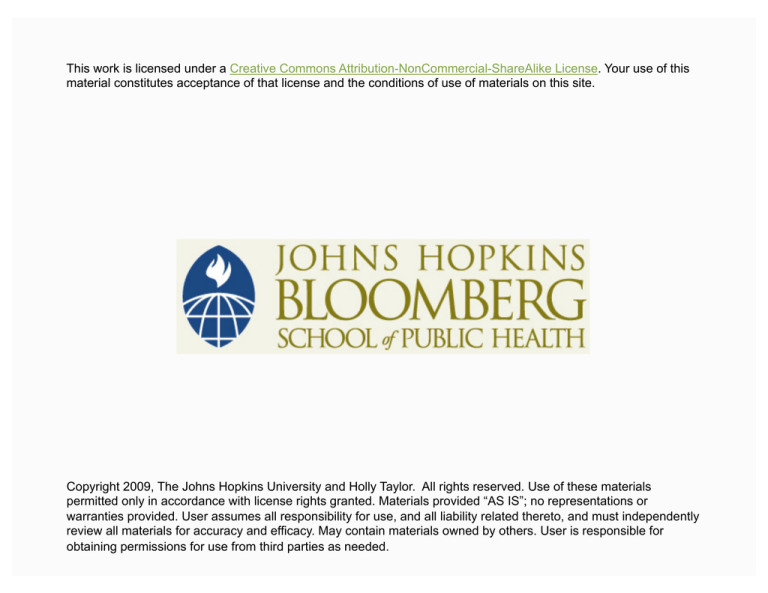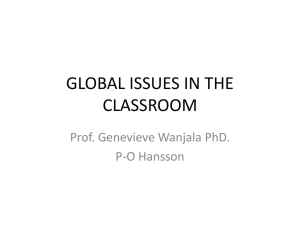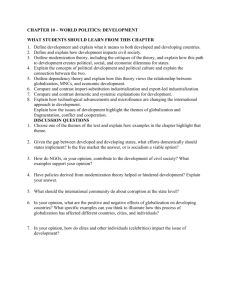
This work is licensed under a Creative Commons Attribution-NonCommercial-ShareAlike License. Your use of this
material constitutes acceptance of that license and the conditions of use of materials on this site.
Copyright 2009, The Johns Hopkins University and Holly Taylor. All rights reserved. Use of these materials
permitted only in accordance with license rights granted. Materials provided “AS IS”; no representations or
warranties provided. User assumes all responsibility for use, and all liability related thereto, and must independently
review all materials for accuracy and efficacy. May contain materials owned by others. User is responsible for
obtaining permissions for use from third parties as needed.
Justice: Applied
Holly Taylor, PhD, MPH
The Johns Hopkins Berman Institute of Bioethics
Overview
Justice considerations relevant at every stage of a research project
- Choosing a research question
- Study design
- Locale of study
- Recruitment of subjects
- Dissemination of results
3
Principle of Justice: Review
Moral requirement
- Equals should be treated equally
Practical applications
- Fair allocation of benefits and burdens of research participation
Fair selection
- Populations
-
Individuals
Unfair allocation may result in exploitation
4
Section A
Fair Allocation: Population Level
Fair Allocation: Population Level
Responsive to health needs
Subject selection
Non-exploitation
- Globalization of clinical research
- Reasonable availability
- Overuse of populations
6
Fair Allocation: Population Level
Responsive to health needs
- Ought to leave population, community better off—or at least no
worse off
- Not enough that disease is prevalent
Engage with appropriate stakeholders
Source: CIOMS. (2002).
7
Fair Allocation: Population Level
Subject selection
- Scientific goals of the study
- Minimize risk
- Collaborative partnership
- Available infrastructure
Human
Systems
Source: Emanuel et al. (2004).
8
Fair Allocation: Population Level
Non-exploitation
- Only those likely to benefit from results ought to be considered
to be exposed to risk and burden of research enrollment
Exploitation
- A exploits B when B receives an unfair level of benefits or unfair
burden of risks as a result of interacting with A
Source: Emanuel et al. (2004).
9
Fair Allocation: Population Level
Globalization of clinical research
- Since 2002, the number of active U.S. FDA–regulated
investigators based outside the U.S. has grown by 15% annually;
the number in the U.S. is declining by 5% annually
Source: Glickman et al. (2009).
10
Fair Allocation: Population Level
Globalization of clinical research
- Reviewed industry-sponsored clinical trials in NEJM, Lancet, and
JAMA from 1995 to 2005
Number of countries serving as trial sites outside the U.S.
nearly doubled in 10 years
Amount conducted in the U.S. and Western Europe
decreased
Source: Glickman et al. (2009).
11
Fair Allocation: Population Level
Globalization of clinical research
- “A pharmaceutical executive reported that a first-rate
academic medical center in India charges approximately $1500
to $2000 per case report, less than one-tenth of the cost at a
second-tier center in the U.S.”
Source: Glickman et al. (2009).
12
Fair Allocation: Population Level
Globalization of clinical research
- India is set to have U.S. $1 billion clinical trial industry by 2010,
up from $200 million in 2007
- Why companies are drawn to India
Technically competent work force
Patient availability
Low costs
Friendly drug control system
Source: WHO Bulletin. (2008).
13
Fair Allocation: Population Level
Globalization of clinical research
- Concerns about increase in clinical trial industry in India
Lack of regulation of private trials
- Solution—clinical trial registry
Uneven application of proper ethics review and informed
consent
- Solution—expand beyond 40 ethics review
committees
Source: WHO Bulletin. (2008).
14
Fair Allocation: Population Level
Reasonable availability
- Post-trial access to successful intervention
To whom?
- Subjects, community, region
Avoid undue inducement
- For how long?
- At what cost to subject?
Who will be responsible for making intervention available?
- Sponsor
- Ministry of Health
Source: CIOMS. (2002).
15
Fair Allocation: Population Level
Fair benefits
- Alternative to reasonable availability
- Framework
Benefits to participants during research
Benefits to population during the research
Benefits to population after research
- Collaborative partnership
- Transparency
Source: Conference on ethical aspects of research in developing countries. (2001).
16
Fair Allocation: Population Level
Fair benefits
- Alternative to reasonable availability
- Framework
Benefits to participants during research
Benefits to population during the research
Benefits to population after research
- Collaborative partnership
- Transparency
Source: Conference on ethical aspects of research in developing countries. (2001).
17
Fair Allocation: Population Level
Overuse of populations
- Community-based research
Source: CIOMS. (2002).
18





